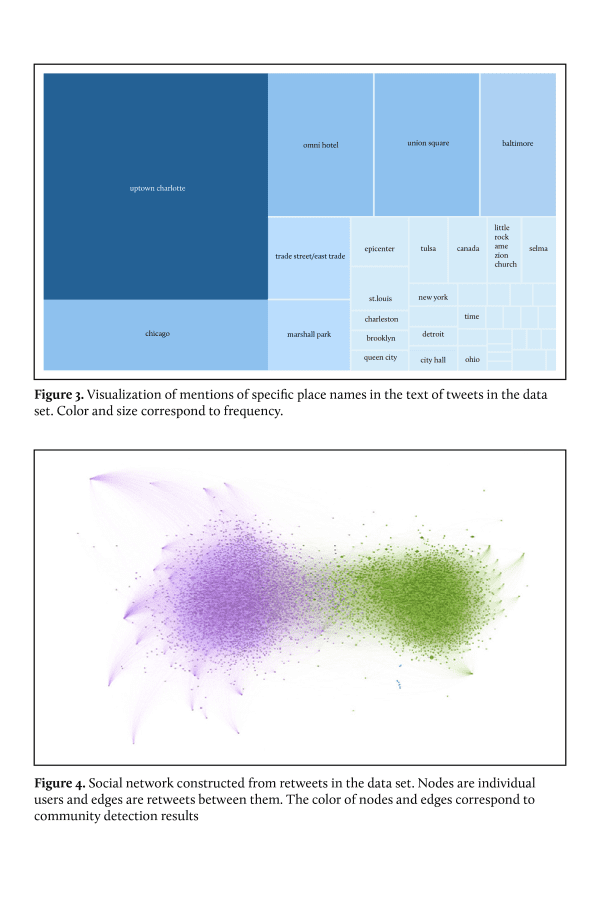Anatomy of a Protest

In the early afternoon of Tuesday, September 20, 2016, 43-year-old Black father Keith Lamont Scott was shot while waiting for his son to return home from school. Over the next ten nights, the Queen City was rocked by marches, civil disobedience, and acts of public disruption in what came to be known as the Charlotte Uprising.
When large-scale Black Lives Matter demonstrations like the Charlotte Uprising periodically erupt, a glance at social media can easily give us the impression of a polarized public, divided rather neatly between pro- and anti-BLM networks. This impression is somewhat misleading. UNC Charlotte data science researchers have shown that there were polarized and relatively closed networks on Twitter both for and against the protests. They discovered that Scott’s sympathizers were more likely to be local to Charlotte than those who were critical of the movement on social media. Contrary to the myth of the “outside agitator,” it was anti-protest sentiment that had fewer connections to the Queen City and the communities who live here. Charlotteans responded to the uprising in complex and contradictory ways, but the “bipolar structure” of protest that we encounter online does not necessarily translate directly onto the local terrain.